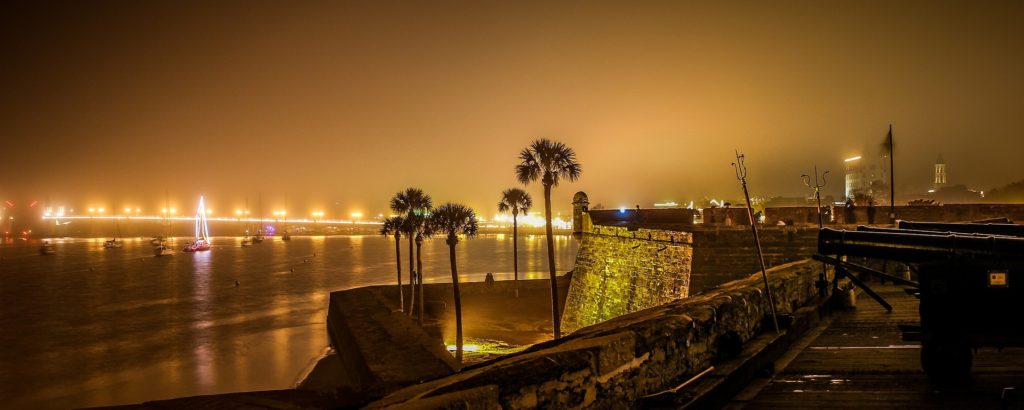
An half-day visit to Castillo de San Marcos National Monument in Saint Augustine. Florida
- Jennifer Melroy
- Last Modified March 10, 2021
- First Published on June 22, 2018
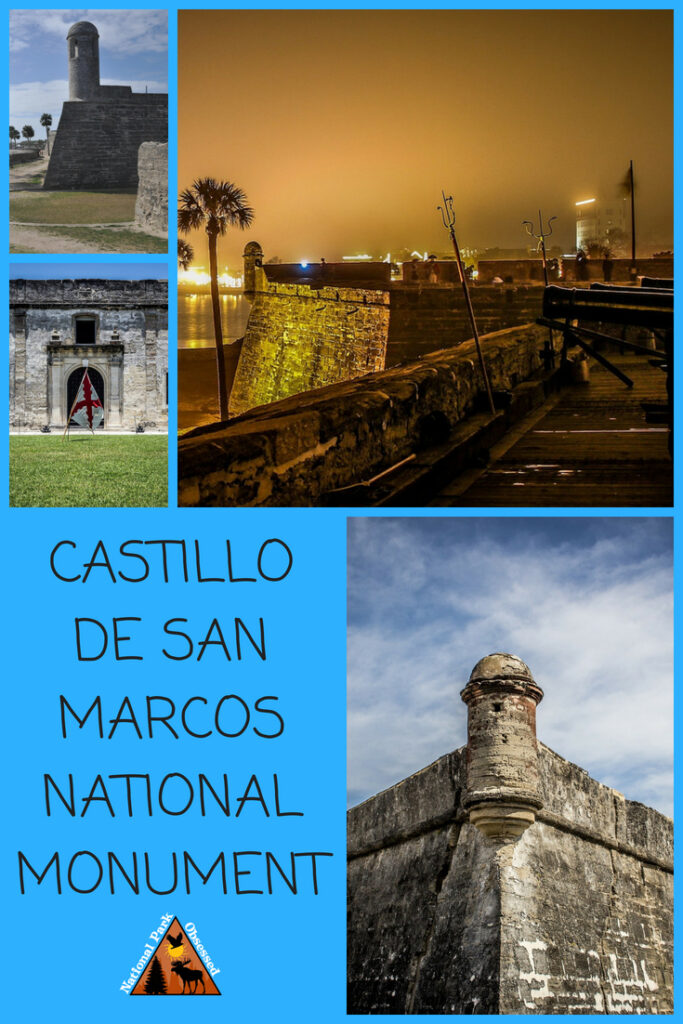
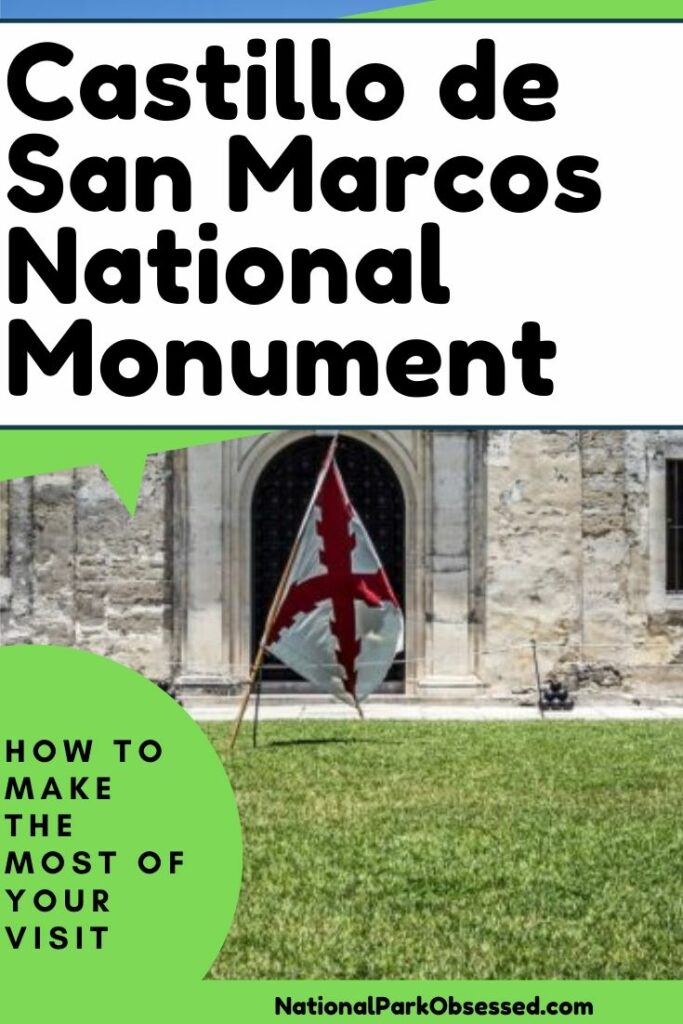

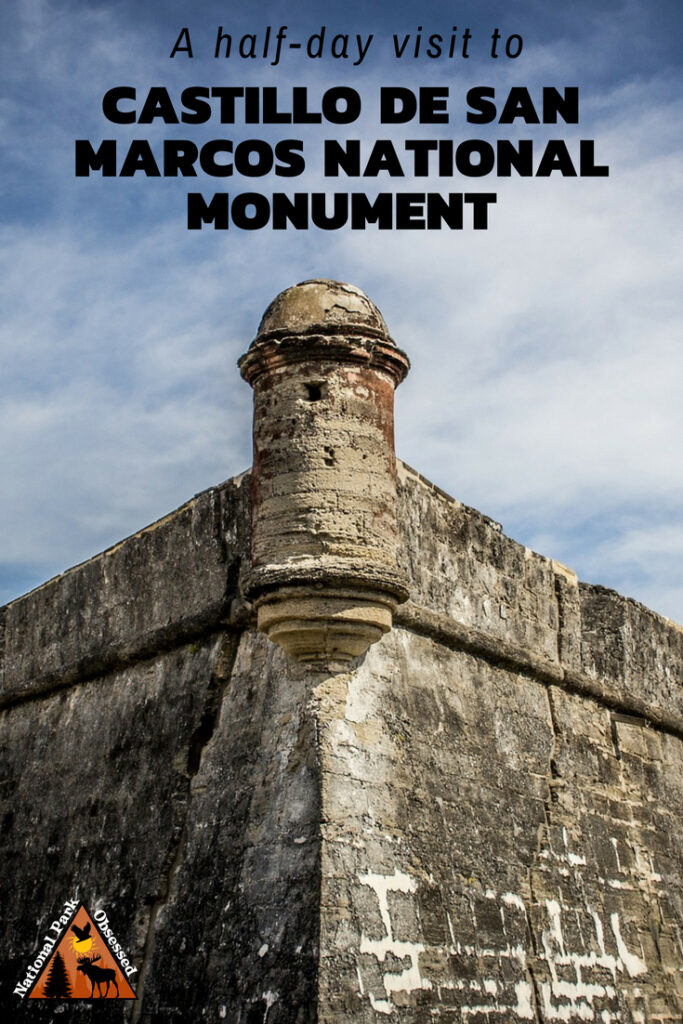

In one of North America’s oldest cities (that was founded by Europeans), a historic fort has stood the test of time. The Castillo de San Marcos has had a colored history from the time it was built. Ownership has changed from Spanish to English to Spanish to American. The name of the fort has changed with its owners. The fort has stood the test of time and while not used to defect the city of St. Augustine, it is one of the most popular and important sites in the city. A visit to Castillo de San Marcos National Monument is necessary to understand the history of the city and the state of Florida.
About Castillo de San Marcos National Monument
The city of St. Augustine was founded in 1565 by Pedro Menéndez de Avilés, a Spanish conquistador. The city was founded to defend Spain’s claim to what is now the state of Florida. The French had established Fort Caroline about 40 miles north in near present day Jacksonville. After establishing the city, Avilés attacked Fort Caroline and burned it to the ground. Ending the French interest in Florida.
Over the next hundred years, the city would be sacked twice by English pirates, Sir Frances Dreak in 1586 and Robert Searle in 1668. In conjunction with Searle’s raid, the city of Charleston was founded and the Spanish realized they need better protection than the wooden forts they had been building.
In 1672, the constitution of the masonry fort of Castillo de San Marcos was started. It took 23 years to build. The fort is a masonry star with four bastions, a ravelin, a sally port, and moat. The fort is made of coquina. This sedimenary rock is made of seashells and coral that has cemented together. The coquina is a soft stone that cannon balls for sink into wall rather shatter the wall. During the 1740 Seige of St. Augustine, the British forces thought the fort was magic since their cannon balls never seemed to damage the fort.
In 1763, Castillo was handed over to the British as part of the Treaty of Paris. The fort was renamed Fort St. Mark. The fort was neglected until 1776. During the American Revolutionary War, the fort was used as a military prison and improvements were made.
After the Revolution, the fort was returned to Spain and renamed Castillo de San Marcos. The held it until conflict with the newly formed United States resulting in Spain ceding Florida in 1821. The fort was quickly renamed after General Francis Marion “The Swamp Fox.”
The fort became part of an extensive network of masonry forts to protect the American coast line. The fort was mostly used as a prison during the Seminole Wars. Upon the start of the American Civil War, Florida joined the Confederate States of America. The Union left the defense of Fort Marion to a single Union soldier. Said soldier refused to surrender the fort, unless he got a receipt of the fort. Rather than take the fort, the Confederates gave him his receipt and sent him on his way. The fort’s artillery was dismantled and set to other forts.
After the war, the fort went back to being a prison until 1924 when it became a national monument. The fort name was returned to Castillo de San Marcos in 1942 to honor its Spanish heritage.
In the entire history of the Castillo de San Marcos, the fort was never captured by force.
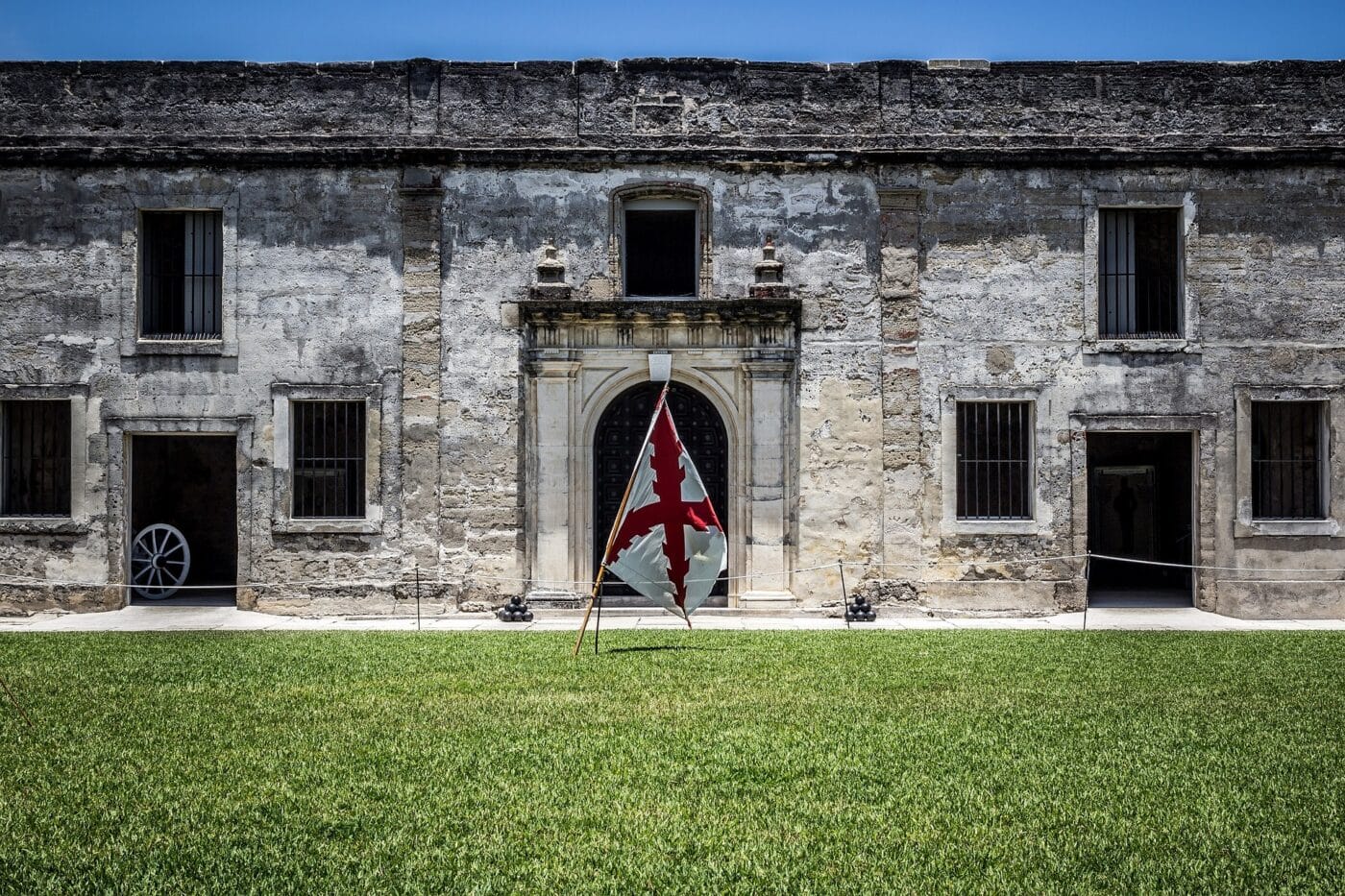
Getting to Castillo de San Marcos National Monument
San Marcos is located in downtown St. Augustine Florida. The fort is easily accessible from I-95. The fort is located about a hour from Jacksonville and a hour from Dayton Beach. It is about 2 hours from Orlando. Jacksonville, Dayton Beach, and Orlando all offer an international airports. All the airports have rental cars and access to public transportation. Orlando and Dayton Beach are both major tourist destinations. Greyhound bus offers several bus every day from Jacksonville, Dayton Beach and Orlando. The tickets range from $15.00-$30.00.
If you are driving to St. Augustine, please be aware that this is a historical city with narrow streets and parking is limited. There is a NPS parking lot at Castillo de San Marcos National Monument. Parking is limited and fills early in the morning. There is a public lot about a block from the Fort but it does usually fill in the early afternoon. Get a Hop-On, Hop-Off St. Augustine Trolley Tour ticket. This give you access to a short tour and makes it easy to get around to all the museums and historical sites.
Where to stay in Castillo de San Marcos National Monument
Saint Augustine offers a range of hotels. If you are on a budget, I recommend Old Town Inn. This hotel is basic but comfortable. The rooms cost between $50-90 depending on the season. My favorite hotel in the area is the Pirate Haus Inn. The Pirate Haus is a pirate themed bed and breakfast. A stay in this hotel is a lot of fun.
Cost to visit Castillo de San Marcos National Monument
The park costs $15.oo per adult (over 16 years old) and 15 and under is free. If in possession of America the Beautiful Pass, 4 adults can enter for free.
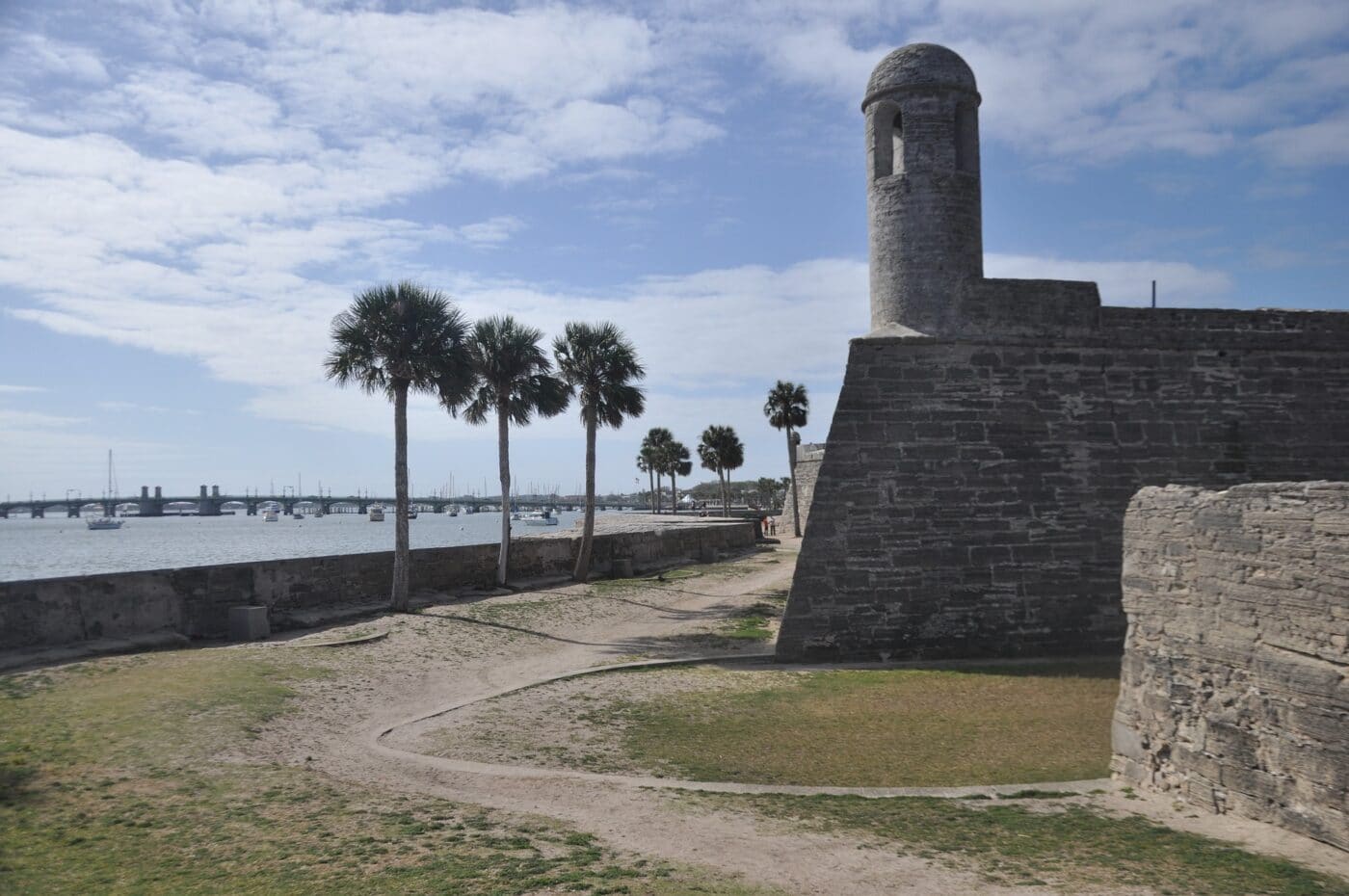
Visit to Castillo de San Marcos National Monument
Activities
- Self-guided tour
- Historic Weapons Demonstration
The fort opens at 8:45 AM and closes at 5:00 PM. Start your tour of Castillo de San Marcos National Monument at the sally port. As you paid the entrance fee, you should be given a map and piece of paper with today’s events on it. Check the times for the Historic Weapons Demonstration. Typically, these occur on Friday, Saturday, and Sunday at 10:30 AM, 11:30 AM, 1:30 PM, 2:30 PM and 3:30 PM. Time your tour so you can see Weapons Demonstration. If you are lucky, there will period dress reenactours around the fort to discuss life in the fort.
Stop in the sally port and check out how thick the walls are. The vary from 14 to 19 feet at the bottom up to 9 ft at the top. Head to the left thru a door in the sally port to check out the guards quarters. The guards at the gate would have used these rooms during guard duty. Across the hall is the bookstore.
In the courtyard is the well that is used to supply water during a seige. The next rooms are connected and showcase the construction and how the coquina made the fort so impenetrable. The next rooms show case the original fort design vs the expansions done during the Spanish and British conflicts of the 1730-1750s. The castemates where added to allow for larger guns to be added to the gun deck.
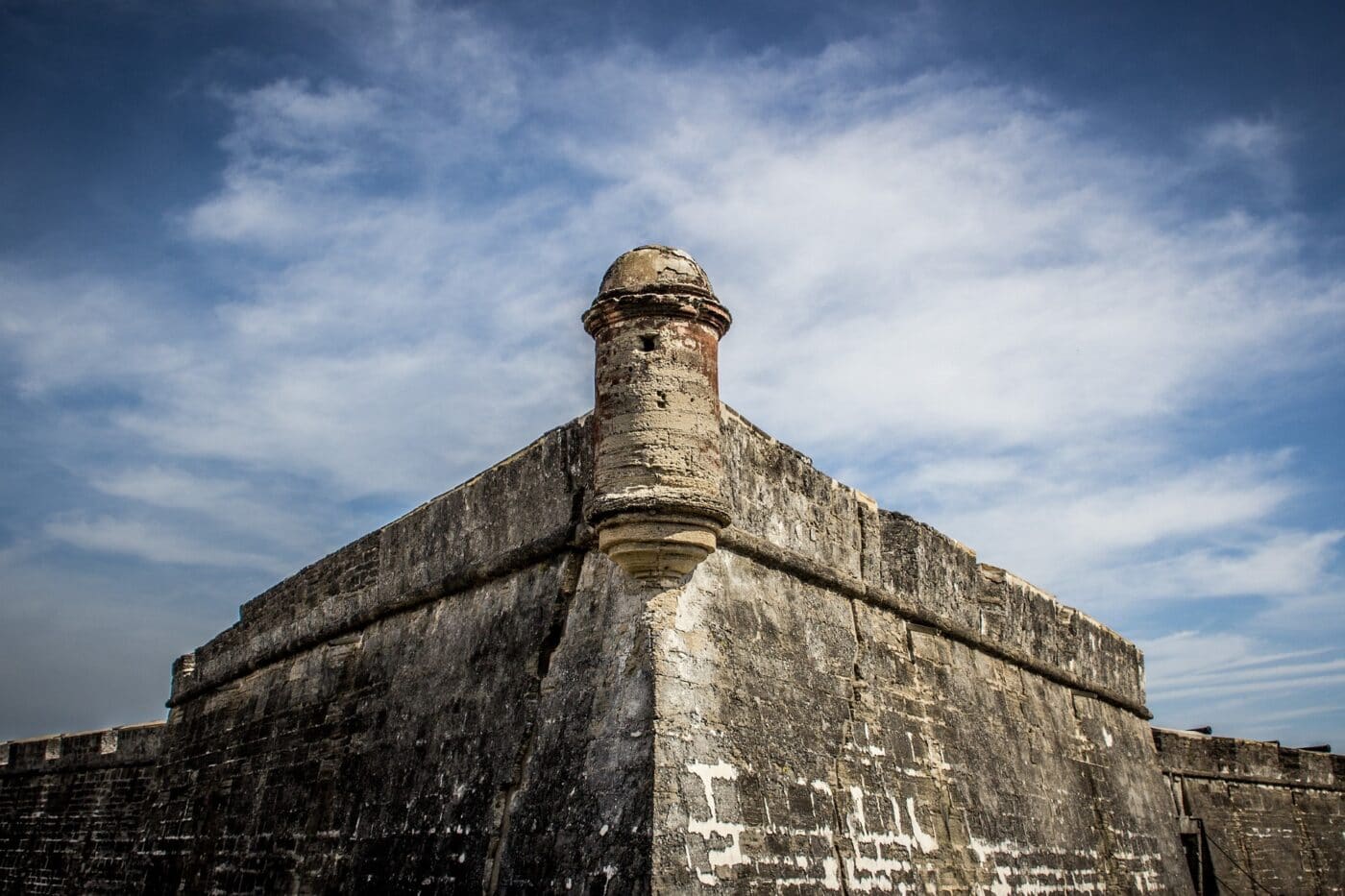
The theater shows a 25-minute film on the fort and its early history. The next couple of rooms talk about the British period, second Spanish period, and the US period in the fort. The tour of the fort rooms should take about a hour to hour and half depending on how many of the signs you read. Once done head up to the Gun Deck stairs and take a look of St. Augustine from the top of the walls. The view of the city and the harbor is amazing.
The Historical Weapons Demonstration is a historical reenactment of a cannon firing. A group of volunteers explain how Spanish soldiers would operate as a team to fire the cannon in protection of the city. The reenactment is a highlight of any visit to Castillo de San Marcos.
Take some time to explore the grounds outside of the fort to get a full prespective on the epic piece of engineering.
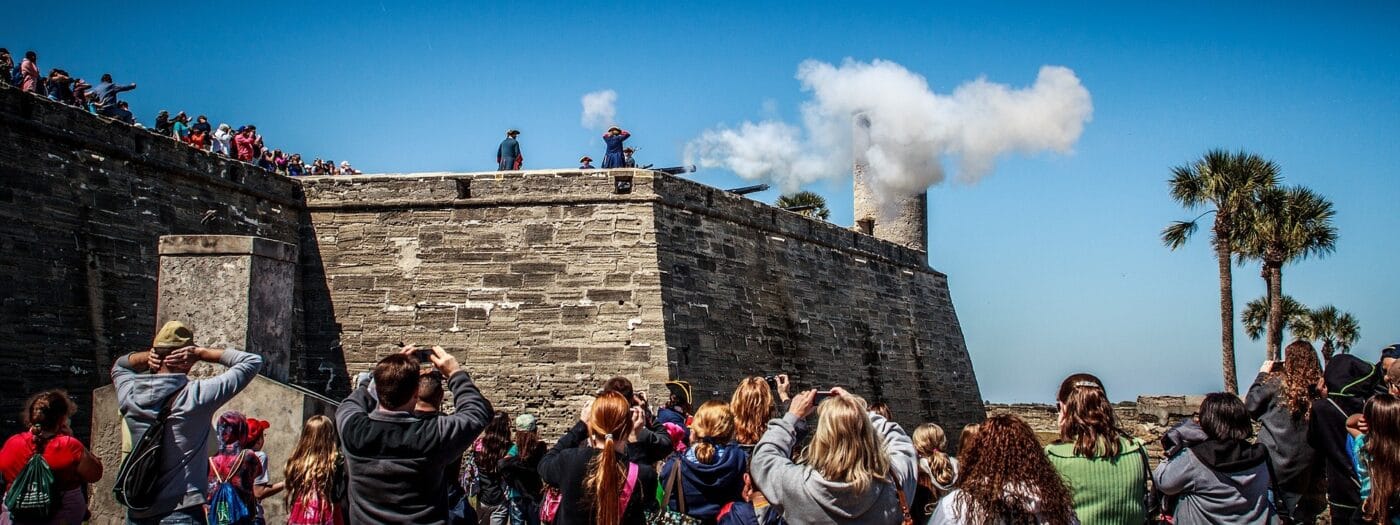
Optional Activities
St. Augustine is a city full of rich history. Here are some amazing ways to learn about the rich and spooky history of St. Augustine.
What do you look forward to on your visit to Castillo de San Marcos National Monument?
Check out some of our favorite Products.
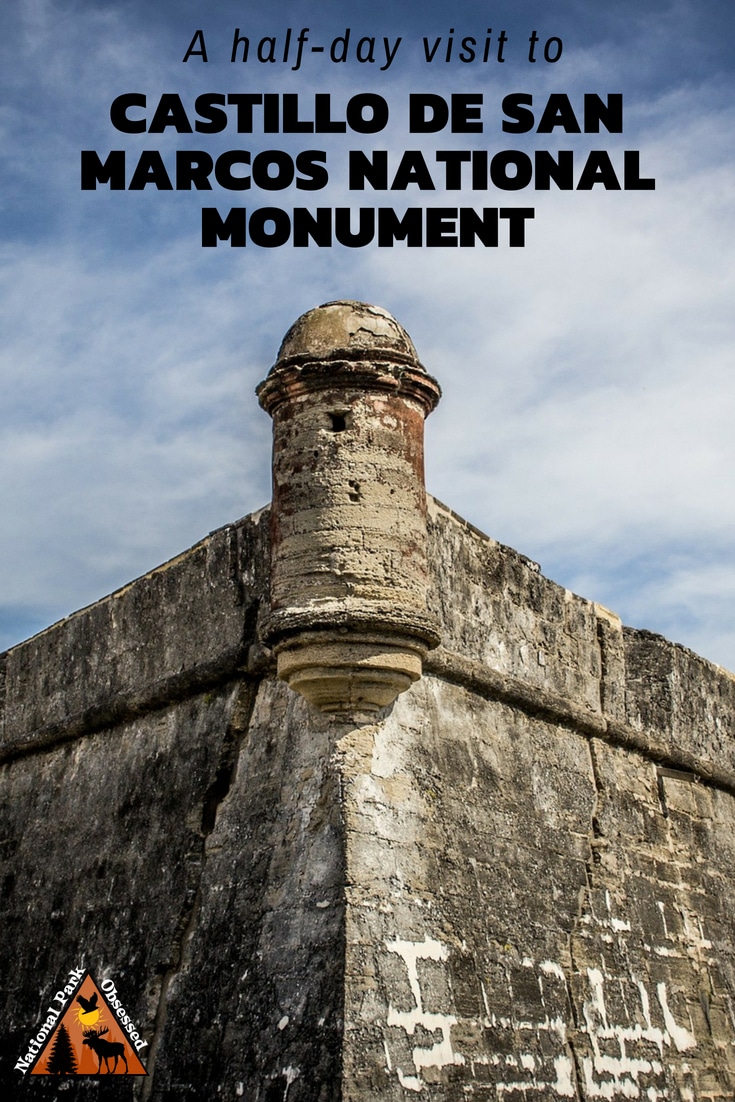
Jennifer Melroy
Hi, I'm Jennifer!

Welcome to the wonderful world of National Parks. I'm here to help you plan your NEXT amazing adventure through the United States National Parks and beyond. I want the national parks to be accessible to all.
I live in Tennessee, and when I'm home, you can find me hiking in the Smokies and the Cumberland Plateau.
58/63 National Parks
250+/423 National Park Units
Want to know more? Start Here.
ACKNOWLEDGEMENT OF LAND
On this site, we promote travel to the United States and beyond that are the traditional lands of Indigenous and First Nations peoples.
With respect, I make a formal land acknowledgment, extending my appreciation and respect to these lands’ past and present people.
To learn more about the people who call these lands home, I invite you to explore Native Land.
DISCLAIMER
National Park Obsessed assumes no responsibility or liability for any errors or omissions in the content of this site (NationalParkObsessed.com). The information contained in this site is provided with no guarantees of completeness, accuracy, usefulness or timeliness. You are encouraged to conduct your own due diligence before acting on the information provided on this site and should not rely on the opinions expressed here.
There is an inherent risk in all outdoor recreation activities, the reader assumes all responsibility for their own personal safety.
DISCLOSURE
We are a participant in the Amazon Services LLC Associates Program, an affiliate program designed to provide a means for us to earn fees by linking to Amazon.com and affiliated sites.
Privacy Policy • About Us • Contact
Select stock photography provided depositphotos
Copyright ©2023 National Park Obsessed, LLC
Last Updated on 10 Mar 2021 by Jennifer Melroy


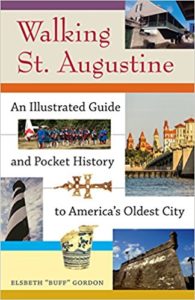
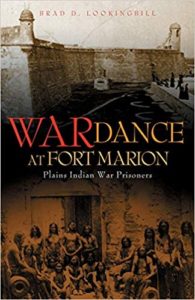




18 Comments
Shweta
I dont usually associate the US with forts, but this one looks interesting for sure. It was nice to learn about the Spanish origins of the city of Florida.
Jennifer Melroy
The US has a large number of historic forts built all around the country.
Eva
I have never been to Florida and did not know this place existed. Seems like you had a great time and learned something new as well. I definetly learned something reading your post haha Thank you for sharing!
Jennifer Melroy
Most people don’t realize there is a lot more to Florida than Miami and Disney World.
Kathleen
I’ve been to St Augustine one time, with my mom and sister, and really enjoyed it. It’s such a beautiful old city. We parked at our hotel and used the trolley to avoid the congested roads. We visited the fort as well and enjoyed it very much. We were there 3 days I think and stayed busy the whole time. Love your photos.
Jennifer Melroy
The city is a special place as one of the oldest cities in the US.
Giulia
This looks so different both from the idea I had of Florida (palms, beaches) and the idea I had of National Parks (wild nature and animals). I like the focus of your blog, keep up with the good work!
Jennifer Melroy
Florida is a surprising state with several national park site and most don’t relate to the beaches.
Layla
I hear this was one of the oldest cities in US It’s such a beautiful place. I’d love to visit the fort as well! Your photos make me want to visit and put it on my travel list!
Jennifer Melroy
It is the oldest European founded city in North America.
Claire
It’s funny, in British history, Francis Drake isn’t a pirate, he’s a hero 😀 The fort certainly has a lot of history, it’s amazing that in all those conflicts the fort was never taken! The reenactment sounds like fun, it would be cool to catch a glimpse of what it was like to fight off pirates!
Jennifer Melroy
To most of the US, Drake is a hero pirate. We might have broken away from England but your enemies of that era are our enemies so most of us consider him a hero pirate.
Janine Thomas
Gosh those walls really are thick by the look of things. I guess, like so many coastal forts they had to be thick to withstand the onslaught of cannonballs from the ships in the bay. It’s great to see that is has been so well preserved.
Jennifer Melroy
The walls are between 10-14 feet. Deflecting cannon balls was part of the plan.
Jitaditya
Glad to find this slice of history of USA that we don’t know much about. Great photographs too. Especially those fort walls overlooking the bay is a great frame.
Jennifer Melroy
It is amazing how much history we don’t actually talk about in the United States.
Jennifer
The fort reminds me a bit of the one in Puerto Rico. I always love a good fort to explore and my friend that lives near St. Augustine is always raving about it. I’d definitely be up for checking this out if I ever make it to Florida with time to explore around a bit.
Jennifer Melroy
The one in Puerto Rico was also built by the Spinach so they would look similar.